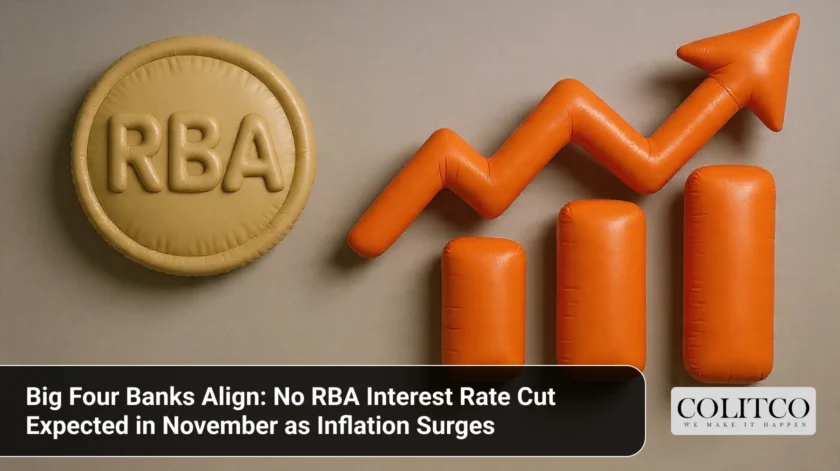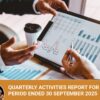Australia’s Big Four Banks have confirmed that a rate cut in November is off the table. The Reserve Bank of Australia (RBA) will keep the cash rate on hold at 3.60 per cent for the remainder of 2025. This decision follows a sharp rise in inflation, which has forced all major banks to revise their forecasts.
Inflation Data Forces Rate Hold
The latest Consumer Price Index (CPI) results show headline inflation rose to 3.2 per cent annually in the September quarter. Trimmed mean inflation also increased to 3.0 per cent, up from 2.7 per cent in June. The RBA governor Michele Bullock described a quarterly increase of 0.9 per cent in trimmed mean inflation as a “material miss” for the bank’s forecasts. The actual figure came in at 1.0 per cent, well above the RBA’s target.
Big Four Banks Align on No November Cut
Commonwealth Bank, Westpac, National Australia Bank, and ANZ have all updated their cash rate forecasts. CBA now expects no further rate cuts in this cycle. Westpac has ruled out a November cut and is reviewing its full outlook. NAB has pushed its next expected cut to May 2026. ANZ now expects relief to come in February 2026, but even that is not guaranteed.
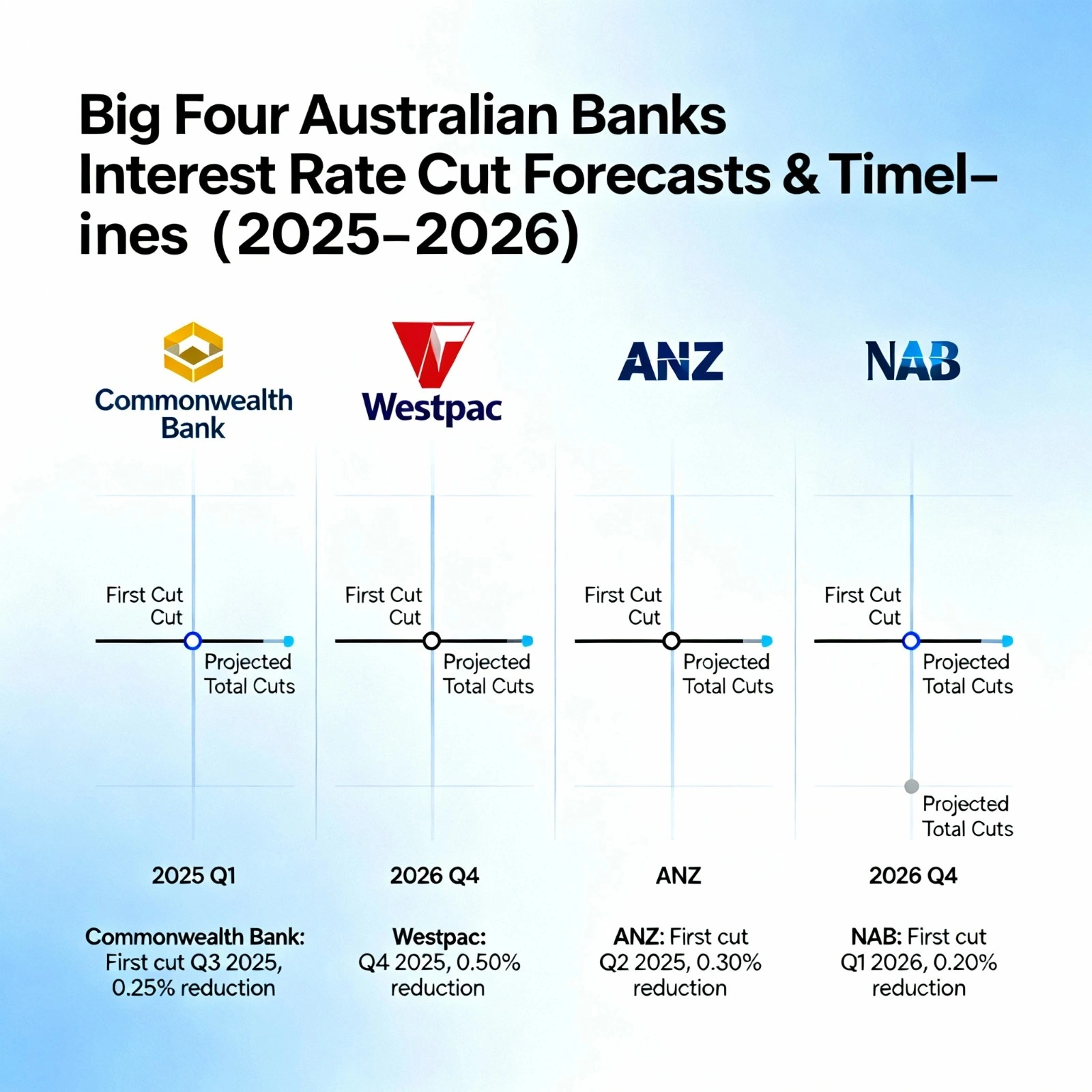
Big Four Australian Banks Rate Cut Forecast (2025-2026)
RBA’s Restrictive Stance
RBA Governor Michele Bullock addressed economists just prior to the CPI release, warning that a quarterly trimmed mean inflation rate of 0.9% or above would represent a “material miss” of the RBA’s inflation forecasts. The actual figure came in at 1.0%, confirming this expectation and reducing the likelihood of any immediate rate cuts.
The RBA’s monetary policy board will likely adopt a cautious stance in its November meeting, choosing to await further evidence that inflation is trending firmly within the target range of 2 to 3% before adjusting policy. The board’s approach is now one of “wait and see,” favouring data dependency rather than pre-emptive changes. 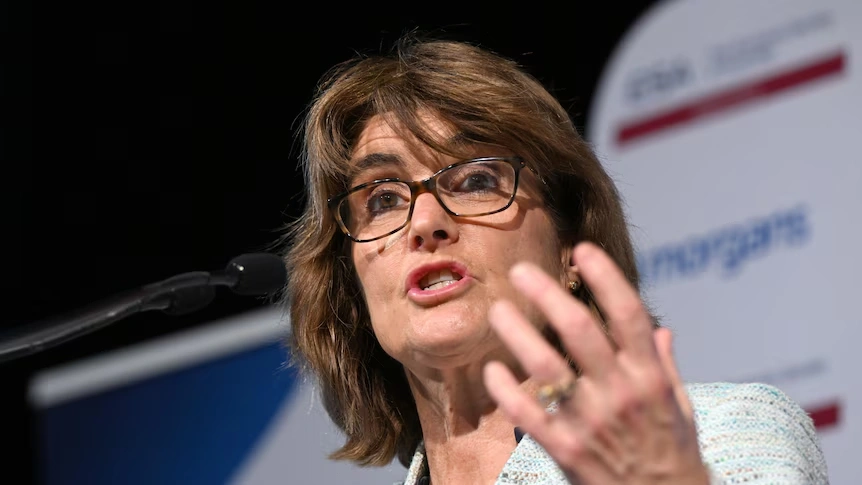
Impact on Borrowers
Borrowers seeking rate relief should look for competitive offers from lenders. Nine financial institutions have cut variable rates out of step with the RBA. Westpac’s lowest variable rate is now 5.24 per cent for online applications. CBA’s offshoot Unloan offers rates from 5.19 per cent. These cuts are mainly for new customers, but existing borrowers can negotiate for better deals.
Businesses and investors must also prepare for a prolonged period of higher borrowing costs. Concerns about rising inflation and global uncertainties, including geopolitical tensions and volatile commodity prices, complicate economic forecasts. Market analysts suggest that energy price increases and the removal of government rebates could add strain on household budgets and business cash flows.
Future Rate Cut Uncertain
The RBA may consider a rate cut in 2026 if inflation trends favourably. However, the central bank will not act on a single data point. The higher unemployment rate, now at 4.5 per cent, adds complexity to the RBA’s decision-making. The bank must balance inflation control with employment stability.
Market Adjustments Reflect New Realities
The futures markets have adjusted to the shifting landscape. ASX 30 Day Interbank Cash Rate Futures indicate a 39% chance of an interest rate cut in November, down from previous expectations that had suggested a higher probability. Investors are increasingly pricing in a later timeline for easing, consistent with the banks’ revised outlooks.
Key Quotes from Bank Economists
Belinda Allen, Australian economics lead at CBA, stated, “The rise in inflation and the ongoing cyclical increase in demand, primarily fueled by consumer spending and housing, will lead the RBA to determine that the economy requires the cash rate to remain in a slightly restrictive zone.” Luci Ellis, Westpac’s chief economist, noted, “A February cut is far from certain now, given the size of the upside surprise this quarter.”
Summary Table: Big Four Bank Forecasts
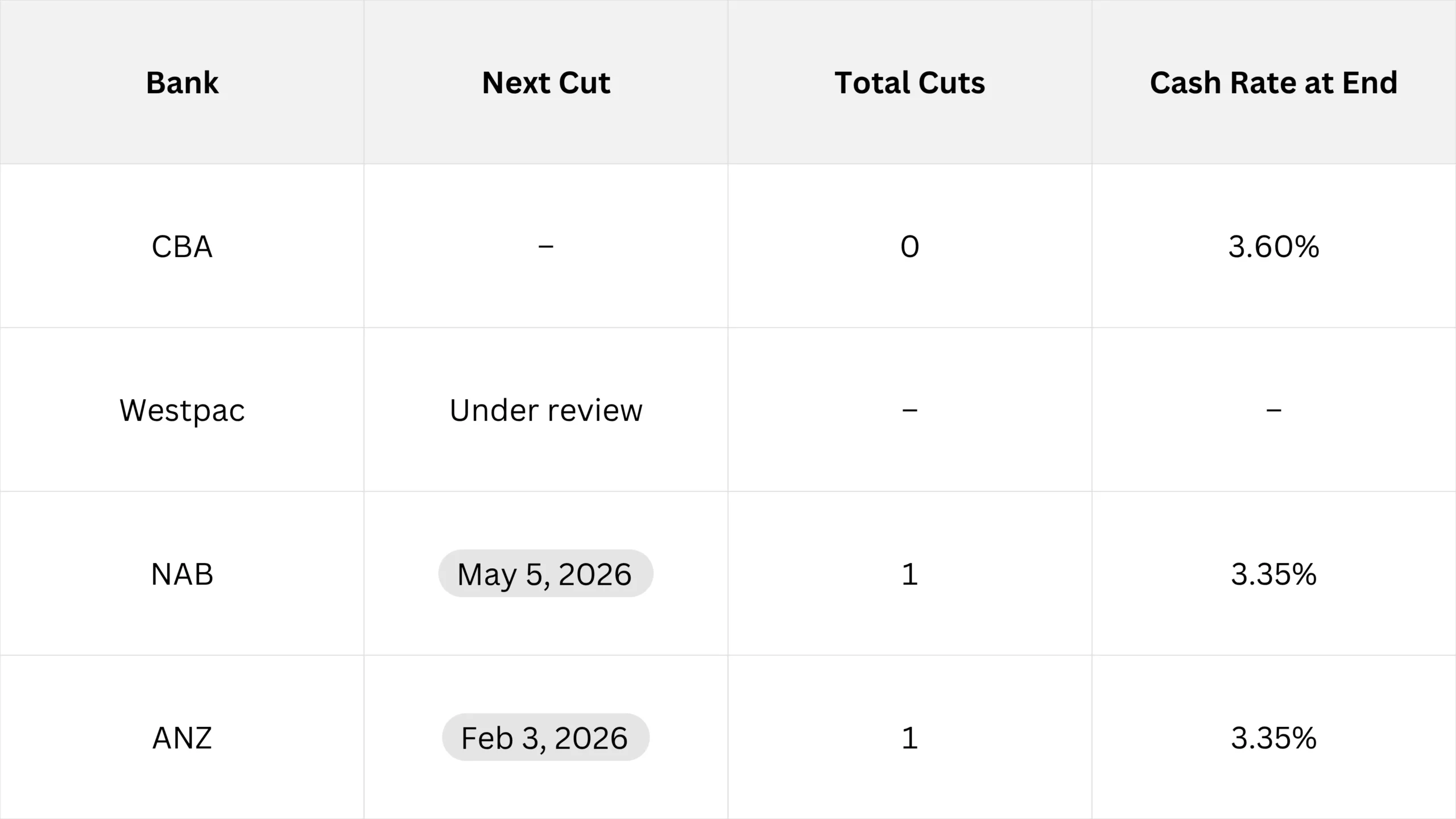
This consolidated outlook signals a cautious approach by Australia’s biggest banks in interpreting inflation trends and the RBA’s policy signals.
Outlook for the RBA Meeting and Beyond
The RBA’s next board meeting on 4 November 2025 comes amid competing economic signals. While consumer spending remains firm in certain sectors, persistent inflation forces central bankers to prioritise price stability over stimulus. The unemployment rate, currently close to 4.5%, has shown minor fluctuations but is not enough to sway the board towards easing interest rates soon.
Conclusion
The Big Four banks’ consensus that no rate cut will occur in November reflects a fundamental reassessment following the inflation surge. The RBA is expected to keep the cash rate at 3.60% for the immediate future, adopting a data-driven, patient approach. Homeowners, businesses, and market participants should anticipate a waiting game that could extend into mid-2026 before any meaningful monetary easing.
This new stance underscores the RBA’s commitment to maintaining price stability while cautiously monitoring economic developments. The Australian economy faces ongoing uncertainty as inflationary forces persist, and monetary authorities hold the line on interest rates. The coming months will be critical in shaping the path forward for Australia’s economic policy.

